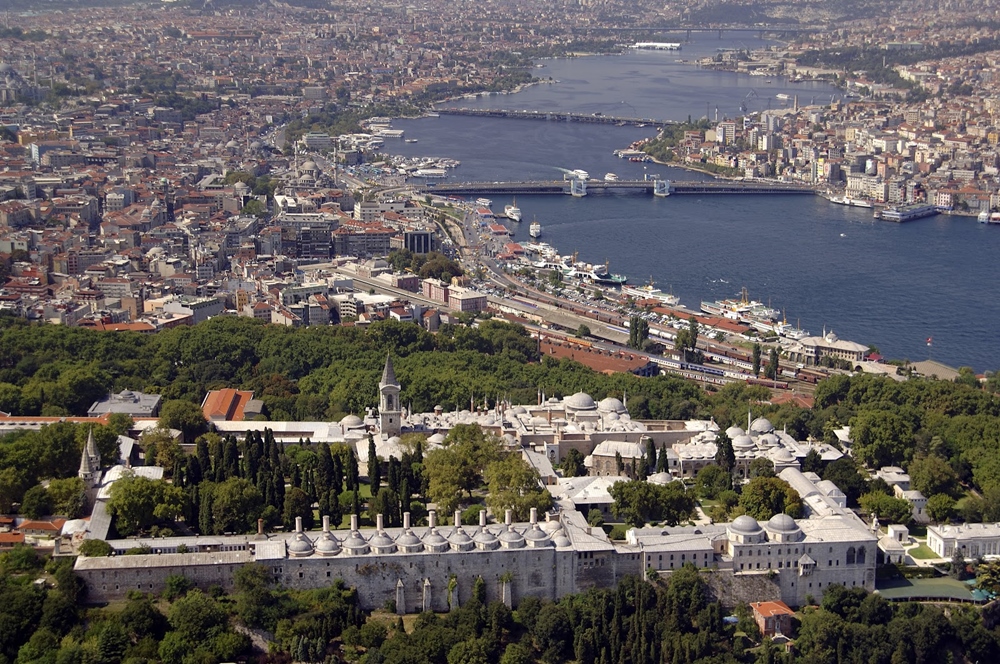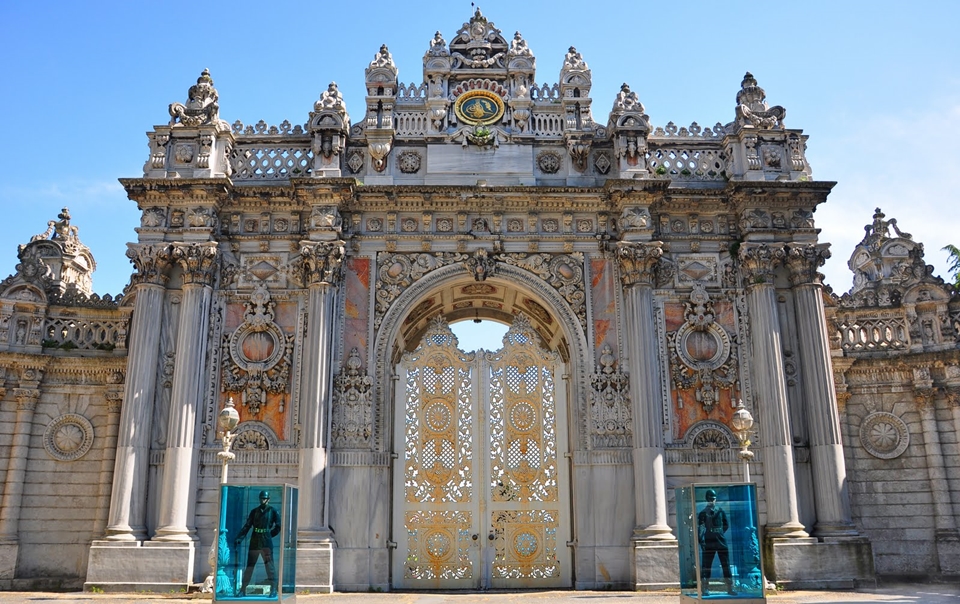Places to VIsIt In Turkey
Istanbul
The former capital of three successive empires, Roman, Byzantine and Ottoman, Istanbul today honours and preserves the legacy of its past while looking forward to a modern future.Its variety is one of Istanbul’s greatest attractions: The ancient mosques, palaces, museums and bazaars reflect its diverse history.
Istanbul is the commercial, historical and cultural pulse of Turkey, and its beauty lies in its ability to embrace its contradictions.: ancient and modern, religious and secular, Asia and Europe, mystical and earthly all co-exist here. Istanbul Old City area (Sultanahmet) area is the first place in Turkeywhich was listed as a World Heritage Site by Unesco.
Istanbul offers so many things to visit and see, but we will try to highlight them for you below:
Hagia Sophia (Aya Sofya Camii)
Hagia Sophia is the one of the most visited museums and most prominent monuments in the world in terms of art and the history of architecture. It has also been called “the eighth wonder of the world” by East Roman Philon as far back as the 6th century.

The current Hagia Sophia is the third construction, done in a different architectural style, even though it occupies the same location as the previous two. The original building was constructed by the most important architects of the period (527-565), Anthemios (Tralles) and Isidoros (Miletus), under the order of Emperor Justinianos. It is mentioned in the resources that during its construction period, the two prominent architects each had 100 architects working under them, who in turn had 100 workers each working under them.
The construction of the Hagia Sophia began on February 23, 532. It was completed before long, approximately within 5 years and 10 months. It was then opened to divine service with a great ceremony on December 27, 537.
It was used as a church for 916 years, but following the conquest of Istanbul by Fatih Sultan Mehmed, the Hagia Sophia was converted into a mosque. Afterwards, it was used as a mosque for 482 years. Under the order of Ataturk and the decision of the Council of Ministers, Hagia Sophia was converted into a museum in 1935.
Hagia Sophia is open for visit every day except Mondays. The winter visiting hours for the Hagia Sophia are from 09am to 05pm, with the final entry being at 04pm. During the summer, the visiting hours are between 09am to 07pm, with the final entry being at 06pm.

The Blue Mosque (Sultanahmet Camii)
One of the most famous monuments of Turkish and Islamic art, The Blue Mosque( Sultanahmet Camii) is visited almost by everyone who comes to Istanbul.
Built between 1609-1616, the mosque used to be part of a large complex, including a covered bazaar, Turkish baths, public kitchens, a hospital, schools, a caravanserai, and the mausoleum of Sultan Ahmet. The architect, Mehmet Aga, was a student of Sinan, the greatest architect of classical Turkish architecture.
The interior has a centralized plan; the main and side domes rise on four large columns that support broad and pointed arches. The walls of the galleries surrounding the three sides of the interior chamber are decorated by over 20,000 exquisite Iznik tiles. The areas above the tiles and the inside of the domes are decorated with paintwork. The blue of the paintwork, which gives the mosque its name, was not the color of the decorations originally; they were painted blue during later restorations. During the last renovation, completed in 1990, the darker blue color of the interior decorations painted as its original light colors.
The floor is covered by carpets, as in all mosques. Next to the mihrab (niche aligned towards Mecca) opposite the main entrance, there is a marble minber (pulpit) with exquisite marble work. On the other side is the sultan's loge (box) in the form of a balcony. The 260 windows flood with light the interior space, which is covered by a dome 23.5 meters in diameter and 43 meters high.
The minarets of the mosque are classical examples of Turkish architecture. The balconies are reached by spiral stairs. It is from these balconies that five times a day the believers are called to prayer - in our day using loudspeakers.
Topkapi Palace
Topkapi Palace was not only the residence of the Ottoman sultans, but also the administrative and educational center of Ottoman Empire. Initially constructed between 1460 and 1478 by Sultan Mehmed II, the conqueror of Constantinople, and expanded upon and altered many times throughout its long history, the palace served as the home of the Ottoman sultansand their court until the middle of the 19th century.
In the early 1850s, the palace became inadequate to the requirements of state ceremonies and protocol, and so the sultans moved to Dolmabahçe Palace, located on the Bosphorus. Despite this move, the royal treasure, the Holy Relics of the Prophet Muhammad, and the imperial archives continued to be preserved at Topkapi, and since the palace was the ancestral residence of the Ottoman dynasty as well as the place where the Holy Relics were preserved.

Following the abolishment of the Ottoman monarchy in 1922, Topkapi Palace was converted into a museum on 3 April 1924, on the order of Mustafa Kemal Ataturk.
On exhibitions are the imperial collections of crystal, silver and Chinese porcelain; imperial handmade costumes worn by the sultans and their families, the famous jewels of the treasury; the richest collection of clocks in the world; the sacred relics of Islam including the swords of Muhammed, his bow and his mantle; priceless collection of miniatures and many other priceless objects. One of the largest diamonds in the world, the Spoonseller Diamond, is displayed in a special showcase in the hall. The rooms are exquisitely decorated and tiled.
The Chora Church (Kariye Museum)
The Turkish word "Kariye" is derived from the ancient Greek word "Chora" meaning outside of the city (land). It is known that there was a chapel outside of the city before the 5th century when the city walls were erected. The first Chora Church was rebuilt by Justinianus (527-565) in place of this chapel. The church was destroyed during the Latin invasion (1204-1261) and repaired in the reign of Andronikos II (1282-1328) by the Treasury Minister of the palace.
The mosaics and frescoes in the Chora Church are the most beautiful examples dating from the last period of the Byzantine painting (14th century). The characteristic stylistic elements in those mosaics and frescoes are the depth, the movements and plastic values of figures and the elongation of figures.
After continuing to serve as a church following the conquest of Istanbul in 1453, the building was converted into a mosque in 1511 by Vizier Hadim Ali Pasha. It was converted into a museum in 1945, and during the restoration in 1948-1959 carried out by the Byzantine Institute of America, the mosaics and frescoes were uncovered and brought to the daylight.
The Basilica Cistern
The Basilica Cistern was built during the reign of Justinian I (527-565) to supply water to the palaces in the vicinity. There are 336 columns and these columns are arranged in 12 rows of 28 each. The cistern measures 140 by 70 meters. The columns are topped with capitals, some of them plain, but most in Corinthian style. The water level in the cistern changed from season to season. The water was distributed through the pipes at different levels in the eastern wall.
The largest and most magnificent covered cistern in Istanbul is entered through a small building to the west of the Hagia Sophia Square. The ceiling of this forest of columns is made of brick and is cross-vaulted. The name of the cistern comes from a basilica that was once located nearby.
The ground was cleared during the major restoration in 1987, and when over one meter of mud was removed, the original brick pavement and two marble Medusa heads at the base of two of the columns were revealed. The walkway that was constructed at that time enables visitors to walk around the cistern.
Dolmabahce Palace
The Dolmabahce Palace, a blend of various European architectural styles, was built between 1843-1856 by Karabet Balyan,the court architect of Sultan Abdulmecid. The Ottoman sultans had many palaces in all ages, but the Topkapi was the official residence until the completion of the Dolmabahce Palace.
The three-storied palace built on a symmetrical plan has 285 rooms and 43 halls. There is a 600 meters-long quay along the sea and two monumental gates. The entrance section of the palace was used for the receptions and meetings of the sultans, and the wing behind was used as the harem section.

The palace has survived with its original decorations, furniture, and the silk carpets and curtains. The walls and the ceilings are covered with paintings by the famous artists of the age and decorations made using 40 tons of gold. All the furnishings in the important rooms and halls are in different shades of the same color. The ornate wooden floors have different designs in each room, and they are covered with the famous silk and wool carpets of Hereke, some of the finest examples of Turkish art.
The ballroom is the largest of its kind in the world. A 4.5 ton colossal crystal chandelier hangs from the 36 meters-high dome. The hall, which is used for important political meetings,receptions and balls, was previously heated by an oven-like system under the floor.
In the Republican era, Ataturk used to reside in this palace when he visited Istanbul. He died here in 1938 and before his body was taken to Ankara, it was laid in state while the public poured in to pay him their last respects.
The Hippodrome
The square in front of The Blue Mosque, Hippodrome was one of the most famous areas in Byzantine Constantinople. The original Hippodrome was constructed in 200 AD. by Emperor Septimus Severus. The Hippodrome was the heart of the civil activities. Propaganda activities, rebellions, fights and eventually chariot races took place in this area. The Hippodrome continued to serve as a sports center as well as a gathering place of the people for centuries during the Byzantine Era. Ottomans used for the same purpose as well as using a horse racing place.
There are various monuments in Hippodrome Area. The most attractive one is the "Egyptian Obelisk". This building was originally constructed by Pharaoh Tutmosis III (1549-1503 BC). It was 200 feet high and weighed 800 tons. When shipped from Egypt to Constantinople, it was split into three and only the very top of it survived. It was erected to Constantinople during the reign of Theodosius I in 390. There is a marble base with sculptured relief's representing the Emperor's watching of chariot races with his family. The obelisk is made of pink granite and it depicts Pharaoh Tutmosis III with Sun God Amon Ra.
Another monument in Hippodrome Area is so-called "Serpentine Column". The three intertwined bronze serpents form the column. This column was brought from the Temple of Apollo, Delphi Greece.
The third monument in this area is called as "Colossus" or "The Column of Constantine". This column looks much more eroded and the purpose is thought to have a parallelism with the Egyptian Obelisk.
The last monument in Hippodrome Area is the "German Fountain" or "Fountain of Kaiser Wilhelm II". It is an octagonal building with water taps around which was constructed in 1898. There are lovely mosaics which depicts the signatures of Wilhelm II and Sultan Abdulhamit II inside the fountain.
